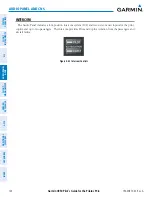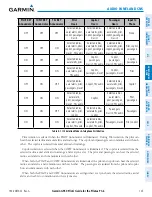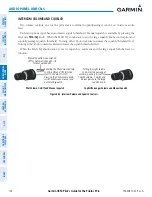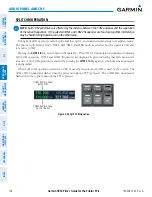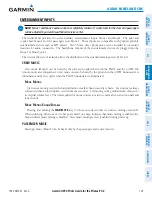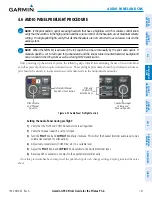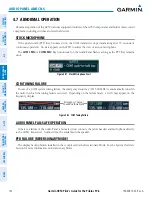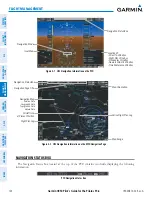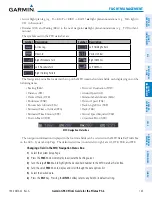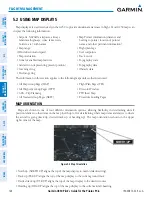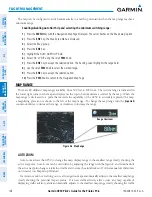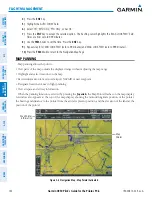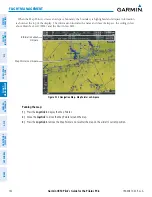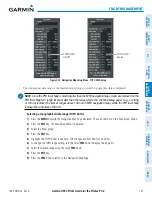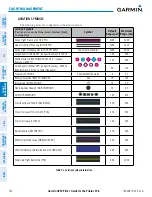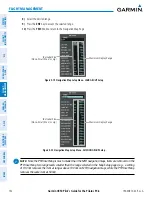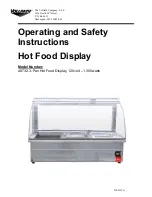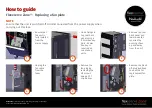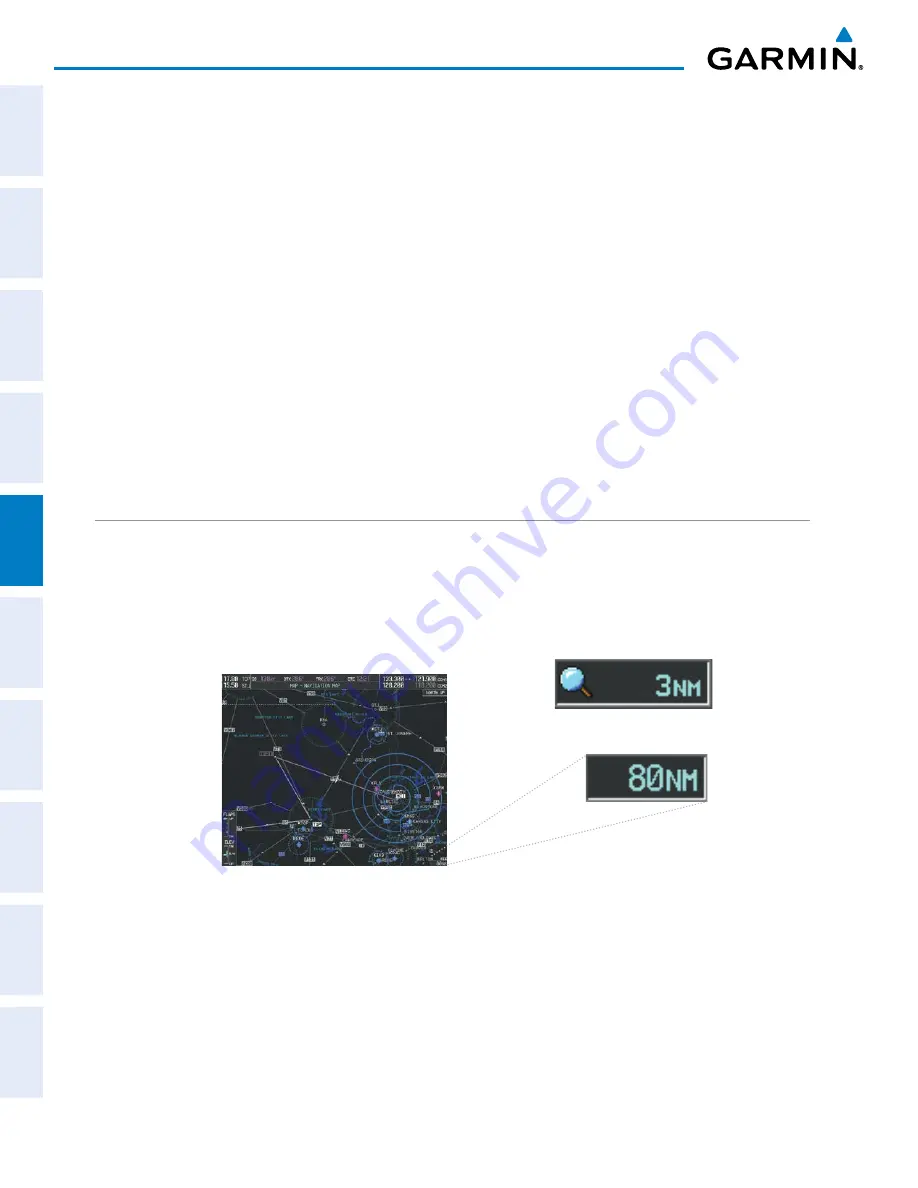
Garmin G950 Pilot’s Guide for the Pilatus PC-6
190-00870-02 Rev. A
138
FLIGHT MANAGEMENT
SY
STEM
O
VER
VIEW
FLIGHT
INSTRUMENTS
EIS
AUDIO P
ANEL
& CNS
FLIGHT
MANA
GEMENT
HAZARD
AV
OID
ANCE
AFCS
ADDITIONAL FEA
TURES
APPENDICES
INDEX
The map can be configured to switch automatically to a north up orientation when the map range reaches a
minimum range.
Enabling/disabling Auto North Up and selecting the minimum switching range:
1)
Press the
MENU
Key with the Navigation Map Page displayed. The cursor flashes on the ‘Map Setup’ option.
2)
Press the
ENT
Key. The Map Setup Menu is displayed.
3)
Select the ‘Map’ group.
4)
Press the
ENT
Key.
5)
Highlight the ‘AUTO NORTH UP’ field.
6)
Select ‘On’ or ‘Off’ using the small
FMS
Knob.
7)
Press the
ENT
Key to accept the selected option. The flashing cursor highlights the range field.
8)
Use the small
FMS
Knob to select the desired range.
9)
Press the
ENT
Key to accept the selected option.
10)
Press the
FMS
Knob to return to the Navigation Map Page.
MAP RANGE
There are 28 different map ranges available, from 500 feet to 2000 nm. The current range is indicated in
the lower right corner of the map and represents the top-to-bottom distance covered by the map. When the
map range is decreased to a point that exceeds the capability of the G950 to accurately represent the map,
a magnifying glass icon is shown to the left of the map range. To change the map range turn the
Joystick
counter-clockwise to decrease the range, or clockwise to increase the range.
Figure 5-6 Map Range
Range Overzoom
AUTO ZOOM
Auto zoom allows the G950 to change the map display range to the smallest range clearly showing the
active waypoint. Auto zoom can be overridden by adjusting the range with the Joystick, and remains until
the active waypoint changes, a terrain or traffic alert occurs, the aircraft takes off, or the manual override times
out (timer set on Map Setup Window).
If a terrain caution or warning occurs, all navigation maps automatically adjust to the smallest map range
clearly showing the potential impact points. If a new traffic advisory alert occurs, any map capable of
displaying traffic advisory alerts automatically adjusts to the smallest map range clearly showing the traffic

